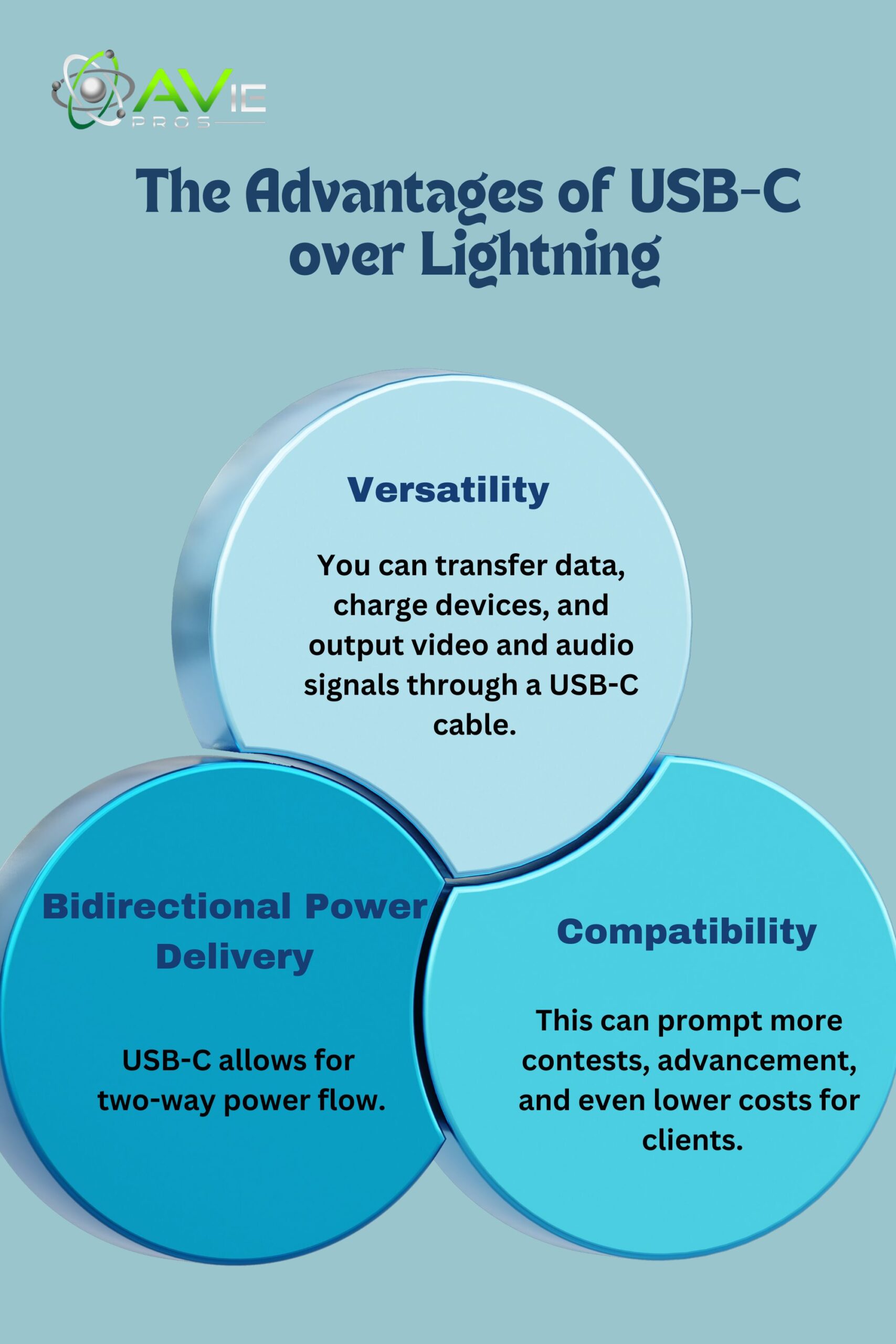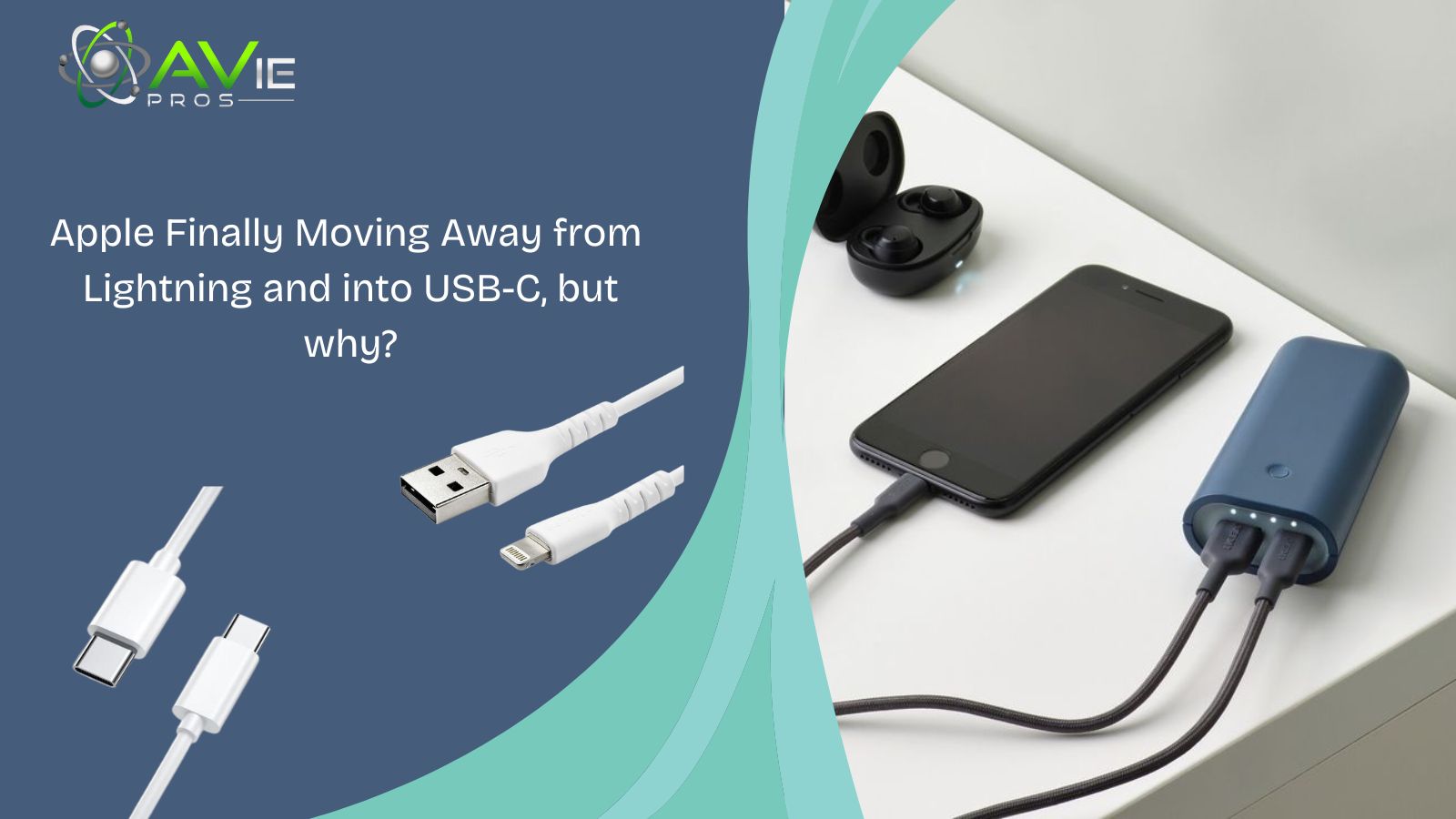In the smartphone technology world, Apple has consistently pushed the limits to another level since the introduction of its most memorable iPhone in 2007. With huge advancements in equipment and programming, there have likewise been many changes in the actual ports of the iPhone. One such rumored shake-up is that Apple is switching its signature Lightning port for the widely used USB-C which left many users questioning why did Apple switch to USB-C.
Apple has a history of prioritizing user experience with their connector choices. The switch from the bulky 30-pin dock connector to the sleeker Lightning port was another move in that direction, making charging and connecting devices much easier. So what is the logic behind Apple taking such a big step?
To get answers to all your queries you need to read this article till the end. I have explained the possible reasons for Apple changing the iPhone port again. So get started reading!
What is USB-C and Why is it Gaining Popularity?
In recent years, USB-C also called USB type C has gained so much popularity as the go-to connector. It is considered the new hotness. A small plug that can connect in any way you stick it in. In addition, it can provide fast charging, and unlike older plugs, it can connect your device easily to other devices like TVs, computers, etc.

Unlike the Lightning port, which works just with Apple gadgets, USB-C is a widespread interpreter for every one of your devices. It’s a similar fitting you can use for everything, from phones and PCs to cameras and, surprisingly, a game control center. No more carrying around with different cables for each thing. Due to its convenience and flexibility, it is the go-to choice for many users and manufacturers worldwide.
Why does Apple use Lightning Not USB-C?
Back in 2012, the Lightning port was presented by Apple and it was a critical jump forward from the old 30-pin dock connector. Here are the improvements that became the basis for this transformation:
- Smaller and Sleeker: The Lightning port is way more compact, making phones thinner and much lighter to hold.
- No more Fumbling: Unlike the older connector which fits in only one way, the Lightning port plugs in easily no matter which side is up.
- More Durable: Apple claims that the design of the Lightning port is long-lasting and less likely to break compared to the older connector.
Since USB-C wasn’t yet introduced in the market, by creating a port, Apple had more control over the design, functionality, and potentially even the manufacturing process. This could have allowed for tighter integration with their devices.
Moreover, since the Lightning port is unique to Apple devices, they could hold a strong position in what accessories were made for them. And with this control, Apple could design to work seamlessly only with their devices. This means fast charging and data transfer can work reliably across iPhones, iPads, and other Apple products.
The Limitations of the Lightning Port
Lightning cable compared to the 30-dock connector is a big improvement for Apple but with potential drawbacks. Let’s explore some of the limitations that lead to why Apple is changing the iPhone to USB-C.
- Proprietary
As mentioned earlier, the Lightning port unlike the USB-C cable is limited to work only with Apple products. This means you must have separate cables for Apple devices and other electronics. One of the major issues with the previous port was the lack of versatility, which ultimately led to the question, why did Apple switch to USB-C?
- Slower Data Transfer
Another serious issue in the Lightning port was the high speed transferring data. Compared to the data transfer speed with USB-C, many lightning cables use USB 2.0 which is very slow. As the file size got bigger, this problem became more visible. This can make transferring large files and syncing big data difficult compared to USB-C.
- Power Delivery
Power delivery is another area where Lightning port falls short compared to USB-C. While Lightning supports charging, USB-C can hold higher power wattages. USB-C can provide faster charging times for your devices, especially laptops and tablets.
- Limited Video Output
For connecting to high-definition displays, the Lightning port unlike USB-C has some limitations. It does charge your device, but it won’t show you that image on a big screen like T.V. or laptop. In other words, if you want to watch a movie in stunning quality, you might need an adapter or a different cable with the Lightning port to connect your Apple device to a big screen.
- Third-party Accessory Limitations
Apple’s control over the Lightning port could go against it. For non-Apple accessories, it limits the functionality or affordability. Because Lightning uses Apple’s tech, some cool features on non-Apple accessories might not work perfectly with it. This could limit the working of these accessories compared to what they might be capable of.
The Advantages of USB-C over Lightning
USB-C is slowly and surely winning over the Lightning port due to several advantages, leading many to wonder, “Why did Apple switch to USB-C.”
Here is why this new standard is gaining so much engagement:
- Versatility
The first advantage that USB-C has over the Lightning port is its high versatility. You can transfer data, charge devices, and output video and audio signals through a USB-C cable. This also means your iPhone can connect big screens, computers, and external storage devices using a USB-C cable.
- Bidirectional Power Delivery
USB-C allows for two-way power flow. In other words, a device with a USB-C cable will not only be charged but can charge another device through the same port. This is something the Lightning port can’t do.

- Compatibility
USB-C is an open norm, so any maker can make that work with a more extensive scope of gadgets without requiring exceptional certificates or stressing over similarity issues down the line. This can prompt more contests, advancement, and even lower costs for clients.
Why did Apple Switch to USB-C?
Several reasons were involved in Apple’s transformation from the Lightning port to a USB-C cable.
- Universal Charger
The principal justification behind this move is the need for a generally satisfactory and reliable charging solution. Apple’s change to USB-C isn’t going on in a vacuum. They are answering users’ needs: a less complex, smaller method for charging their gadgets. USB-C is addressing the necessities of purchasers by offering quicker charging, upgraded information move speed, and adaptability to adjust to a wide range of gadgets.
For those iPhone users who already have their devices with USB-C ports in them, their life will undoubtedly be much easier after this shift from Apple. To put it in a great way, Apple’s move to USB-C is like saying to the tech industry that “we are on the same team.”
- Cost Effective
In addition, this shift from Apple company is not just all about user convenience, it’s also a smart business strategy. With fewer different ports to manufacture and manage, Apple could see a future cost reduction. This can free up resources for them and they can invest in other areas of innovation.
USB-C resembles a future-prof connection, and as innovation keeps on rising, USB-C is setting down deep roots. This broad adoption guarantees versatility with a huge scope of gadgets, both now and later on. So you can have confidence that your USB-C cable will deal with any device down the line.
The Impact on Users and Accessories: Challenges and Benefits
The switch to USB-C from Apple is indeed a big change and it will have its impact on users in the following ways:
- New cables needed: With this move, doesn’t mean that your Lightning cables will be completely useless, but for those iPhone devices having USB-C ports, you will need new USB-C cables. This could be inconvenient for those who own a large collection of Lightning cables.
- Adapter Options: More likely, there will be a case where adapters are needed for adjustment. For example, users who want to connect their Lightning accessories to their new iPhones might need a Lightning to USB-C adapter or connector.
Given these minor lowdowns, it is important to consider the long-term benefits associated with this shift to USB-C cables.
- Single Cable: One cable to rule them all! USB-C can work with every device, not just iPhones.
- Easier Connections: No more fooling around and hunting for the right cable. Just plug it in and play.
- Future-proof Tech: Even though it’s just a shift, USB-C will make things simpler and more convenient in the long run.
USB-C vs Lightning
In comparison of USB-C and Lightning, there are various factors to consider. USB-C is a game changer. It lets you move files with lightning speed, charges your devices super quickly, and works with all sorts of accessories, doesn’t matter what your device is. On top of that! USB-C lets you connect your devices to bigger screens or sound systems for movies and music. It is like a one-stop shop for all your connections.
While Lightning works only with Apple-made products or devices, it lets you take advantage of features like speedy charging and crisp audio for your Apple devices. In addition, the Lightning cable stays true to Apple’s sleek design, making it a perfect fit for slim phones like iPhones.
Overall, Lightning keeps things compact for Apple devices, which is great for their slim designs. But for those who prioritize blazing-fast data transfer, powerful charging, and universal compatibility, USB-C is the best choice.
Comparison of Features and Functionality
Here is a breakdown comparison of USB-C and Lightning Cables:
| Feature | USB-C | Lightning |
| Connector shape | Oval | Rectangular |
| Reversibility | Reversible | Not reversible (one side up) |
| Data Transfer Speeds | Up to 40 Gbps | Up to 480 Mbps (USB 2.0) or 5 Gbps (USB 3.0) |
| Power Delivery | Up to 100W | Up to 8.5W (USB-A) or 18W (USB-C) |
| Audio/video output | Supported | Not supported |
The above comparison indicates that USB-C is hands down the most flexible, versatile, and more powerful port than Lightning. However, older devices might still be using Lightning ports.
The Future of iPhone Ports: Will USB-C Become the New Standard?
Apple’s move from Lightning to USB-C means that USB-C is turning into the new business standard. With such rapid information move, strong and quick charging, and high similarity, USB-C ports will rule in cell phone associations. With additional producers taking on USB-C, expect a future where a solitary link flawlessly interfaces your cell phone, PC, and different devices.

Moreover, users can freely use accessories across different devices without worrying about compatibility issues. It might take a while for everyone to switch over from Lightning to USB-C, but with super-fast speeds, powerful charging, and high versatility, USB-C is very much becoming the new industry standard for iPhones.
Conclusion
So, why did Apple switch to USB-C? Indeed, Apple’s change to USB-C from the Lightning port aligns iPhones with the remainder of the tech business. This will make it more helpful for clients with a more extensive scope of gadgets. With USB-C as the dominant standard, Apple is providing a more versatile solution for the tech industry based on the future.
Sure, switching to USB-C might mean needing some new cables but it’s worth it. You will be flying through file transfers, charging your phone in no time, and a single cable to use it for everything. It’s indeed a game-changer! As the tech world keeps moving faster than ever, Apple knows it needs to keep innovating to provide its users with the best smoothest experience possible. That is why the switch to USB-C from the Lightning port makes so much sense and it is the first firm step towards that direction.




